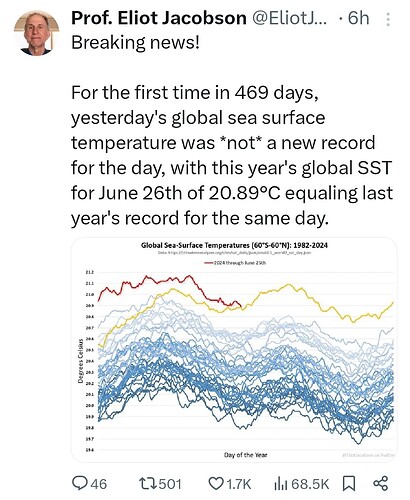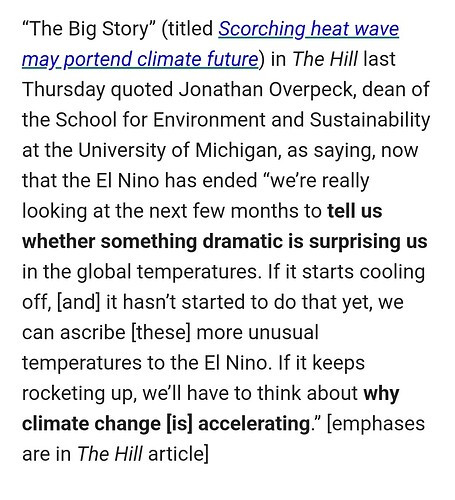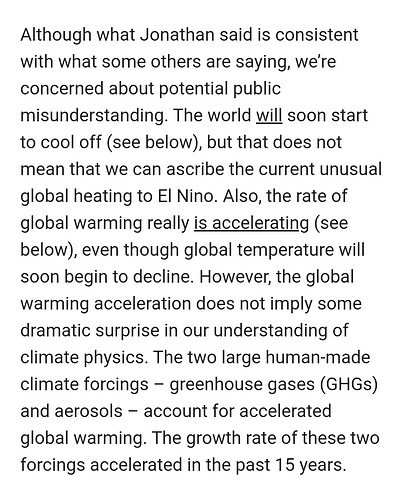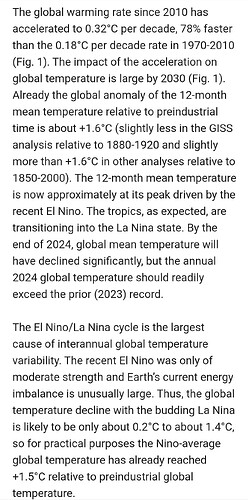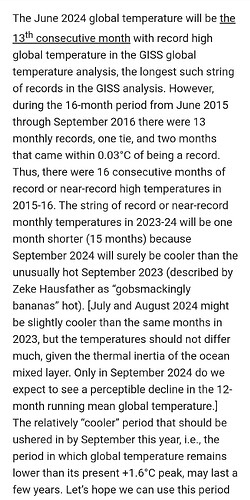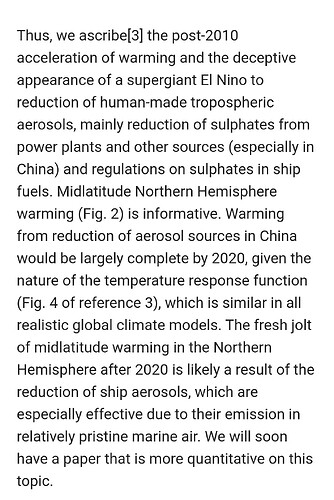Ahhh yeah, because the article is about the 2024 winter season in Mongolia.
Fantastic. Didn’t know you were so interested in Mongolian winters.
Well it’s interesting when it’s the coldest winter in half a century. Thought globe was warming everywhere…that’s what all your daily temperature records tell me anyway.
Globe. Where we live. Yes, it is warming. See @Benny40’s post above. Extreme weather events are a consequence of that. And as the AMOC continues to slow, there will be more abnormally cold weather events, especially in northern Europe. Climate change means a change in climate.
Stop feeding the troll, please
I still love the sign I saw to stop people trampling through a park in Guangxi:
“Do Not Annoy the Landscape!”
Or say “This proves Darwin was wrong”
It is termed “CLIMATE CHANGE”
Why the Fark don’t you get that ?
When it gets really hot, GLOBAL WARMING. When it gets really cold, CLIMATE CHANGE.
The renaming from Climate Warming to Climate Change was a great move by the IPCC strategists wasn’t it. The IPCC can’t lose now can they, its like 2 up using double headed coins … its amazing that they haven’t been called out on it, such bald faced audacity, breathtaking.
Heads I win, heads you lose ![]()
![]()
Don’t you know that The Climate has always been the same, year in year out
maybe they changed it because people are too stupid to understand nuance
The first person I know who made to change the term from the alarming “Global Warming” to the more comfy “Climate Change” was none other than John Winston Howard, a.k.a. “Honest” John, the master of wedge politics.
Ok. Let’s do some basic weather physics. I had this stuff explained to me by a senior BOM meteorologist as part of a CFA bushfire course and found it fascinating. This was supplemented with a talk by one of the leading climate scientists, but I’m not a specialist in this so by all means cross check what I say here.
Hot regions are areas of high pressure. Cold regions are areas of low pressure. Air spirals out of the high pressure zones and then circles in to fill the low pressure zones, following the contours of a weather map. The bigger difference between high and low and/ or the closer the two extremes are to each other, the closer the contours, the faster the wind.
Areas of low pressure take energy to produce, in the same way that areas of high pressure require energy. If the system didn’t have any energy, you wouldn’t have air moving away from high pressure areas into low pressure areas. The flip side of that is that if you have more energy, you’re going to create more of everything, more highs, more lows, more wind.
So what’s the point of this? Well with the global AVERAGE increasing in temperature, there’s going to be more energy in the system. That means we are going to have hotter, longer and more intense heatwaves. But it also means we will be getting more extremes to the colder end, so more intense cold snaps and in places longer cold waves. The danger of global warming isn’t just a slide of the weather we are used to, it’s hotter AND more extreme in every way.
You’ll get no response to this from anyone you’re trying to convince. You’re arguing with people who have zero interest in facts unless it agrees with what they already believe.
There’s no point engaging in good faith.
Climate change is a term used to capture the volatility and variability caused by global warming. It’s not one or the other.
Seems like naming it global warming (if thats not entirely the case) was a pretty ■■■■■■■ stupid thing to do.
Shrug. The globe is, measured on average, warming. Just like summer is, on average, hotter than spring, and even though there was that one time I froze my bits off on a hike on cradle mountain in 6 degrees in January, a localised exception doesn’t disprove a large-scale trend.
An excessive focus on nomenclature over science is, in this field, a sign of someone who’s trying to pointscore in arguments on the internet rather than engage seriously with the reality and complexity of the issues.
